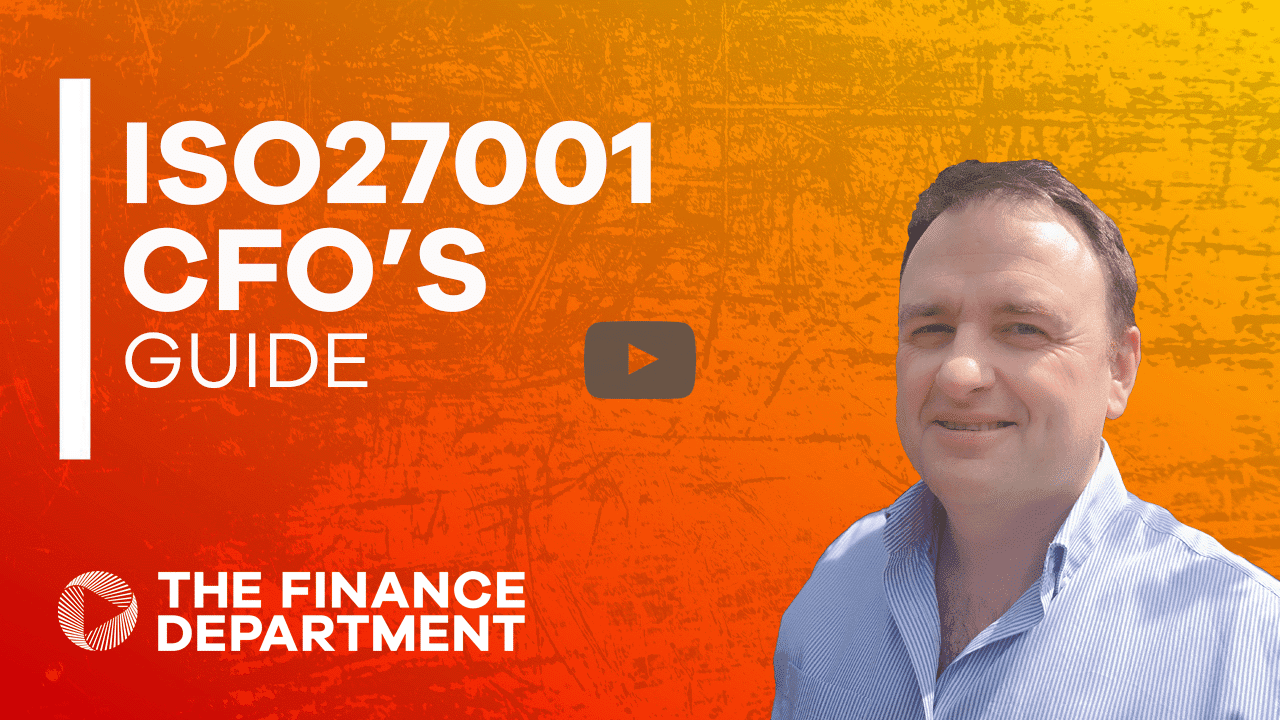Join today and start learning
TFD is the learning platform built for finance professionals.
This content is available as part of our bitesized video series.
Watch this video today by joining our free community.
Video : R&D Tax Credits – What Is Qualifying Expenditure?
In this video, Nathaniel outlines the 4 main costs a company can look to be recovered under the R&D Tax Credit scheme.
Qualifying expenditure refers to the costs that you’ve incurred related to the project that are eligible to be recovered under the R&D tax credit scheme, and there are four main categories of cost that you can look at. There are staff costs, so people on your payroll. There are software costs, this is software that’s involved in the project in some capacity. There are subcontractor costs, typically refers to anyone, not on your payroll that’s doing R&D on your behalf. And finally, there are consumable costs. So, this is usually prototypes, things that are consumed, altered, modified or destroyed within the R&D process that you can get.
So, to break those down in to a bit more detail, staff costs are the typically salaries of your employees that are involved either directly or indirectly in R&D. So, direct R&D involvement would be doing things like project management, actually being hands-on with the R&D project and developing it in some way, shape or form, versus indirect involvement, which would be someone who is perhaps providing maintenance services to the project, who is doing security for the project, or potentially doing administrative duties for the project, so processing invoices related to the project as an example. Not only are you able to include the salary costs, you are also able to include employees’ National Insurance contributions, employees’ pension contributions, bonus payments, over time payments, and travel expenses, providing the travel expenses are paid for by the employee and expensed back to the company. So, if they’re paid for on a company credit card, you can’t include them because they wouldn’t be considered a cost of that individual, that member of staff’s employment. So these are staff costs. If someone is partially involved in R&D and partially involved in other duties, you are able to draw a reasonable portion of their time that can then be included in the R&D application. Now, what a reasonable portion is, is obviously incredibly contextual and that’s part of what we do at Apogee is to help our clients identify that reasonable portion.
Moving into software, similar to staff, you can have software that is either directly used for R&D or indirectly used for R&D. So, R&D directly used for software would be a program that you’re using to code, for example, versus indirect software would be software that you were using to support the R&D activities from an administrative stand point, for example. Pretty straightforward, similar to staff, you can come up with a reasonable apportionment if it’s only partially employed in R&D activity.
Moving on to subcontractors, as the name suggests, these are anybody who is not on the payroll, but that you are paying to do R&D work on your behalf. So, this could be, for example, a third party company, it could be someone who is self-employed. All of these would be considered subcontractors or it could be agency staff, as another example. Now, the key with subcontractors, if you have to identify who is undertaking the financial risk, who’s actually taking the risk in the R&D project, if you’re paying them on an hourly basis, so subcontractor is getting paid regardless of the outcome of the project and you own the IP, very good indicator that you are the one who is undertaking the financial risk, and those costs would be yours to recover. Now with subcontractors, there is a slight restriction, in that you’re only able to include 65% of the subcontractor cost within the R&D application. So it is more restricted when compared to staff costs.
The final area, of course is consumables. So this could be materials that are used in a project that are consumed or destroyed within the project. It could be prototypes that are built and are not sold or were never intended to be sold on. In some instances, it can also be prototypes that do get sold on. This would be first of class products, but you are not able to include the cost of materials that would be then sold on to the client. So again, there’s that element of financial risk that you need to look at. Is it being used up, consumed, or destroyed within the project? If so, you can look at it, if it’s something that is being sold on to a client, you’re probably not going to be able to include that in your application. It also includes cost like heat, light, and power, energy that is used within the R&D process. So that is how a qualifying expenditure works for the SME scheme. It is slightly different for the RDEC scheme. So, if you’re a large company or if you’re an SME, that’s received grant funding for a project, and you’re applying under the RDEC scheme, there are some slight restrictions. The main difference is that subcontractor costs are generally not allowable under the RDEC scheme. So if you paid a third party to do your R&D for you and you have incurred the financial risk, unfortunately, you’re not able to include that within the R&D tax credit application. There are some exceptions such as payments made to charities or made to scientific research organisations.
So, those are your four main areas of qualifying expenditure. And if you add that all together, you will end up with your qualifying expenditure figure, which is what your recovery is based on. If you want more detail on that, please visit our website or get in touch with us at apogee.co.uk. We’ve got a load of information there on how the different eligibility criteria work for different companies of different sizes.
Nat founded Apogee Associates as he believes UK businesses deserve an offering that is second-to-none for service and value delivered, whilst having a positive impact on the environment. Apogee Associates are the sustainable R&D tax credit specialists, helping businesses of all sizes get money for their innovation. Their thorough and diligent process, supported by a comprehensive and robust technical report, has ensured that in the over 500 applications they’ve worked on, they have maintained a 100% success rate; every one has been processed in full and without query.
Video: R&D Tax Credits – What Is Qualifying Expenditure?
In this video, Nathaniel outlines the 4 main costs a company can look to be recovered under the R&D Tax Credit scheme.
Qualifying expenditure refers to the costs that you’ve incurred related to the project that are eligible to be recovered under the R&D tax credit scheme, and there are four main categories of cost that you can look at. There are staff costs, so people on your payroll. There are software costs, this is software that’s involved in the project in some capacity. There are subcontractor costs, typically refers to anyone, not on your payroll that’s doing R&D on your behalf. And finally, there are consumable costs. So, this is usually prototypes, things that are consumed, altered, modified or destroyed within the R&D process that you can get.
So, to break those down in to a bit more detail, staff costs are the typically salaries of your employees that are involved either directly or indirectly in R&D. So, direct R&D involvement would be doing things like project management, actually being hands-on with the R&D project and developing it in some way, shape or form, versus indirect involvement, which would be someone who is perhaps providing maintenance services to the project, who is doing security for the project, or potentially doing administrative duties for the project, so processing invoices related to the project as an example. Not only are you able to include the salary costs, you are also able to include employees’ National Insurance contributions, employees’ pension contributions, bonus payments, over time payments, and travel expenses, providing the travel expenses are paid for by the employee and expensed back to the company. So, if they’re paid for on a company credit card, you can’t include them because they wouldn’t be considered a cost of that individual, that member of staff’s employment. So these are staff costs. If someone is partially involved in R&D and partially involved in other duties, you are able to draw a reasonable portion of their time that can then be included in the R&D application. Now, what a reasonable portion is, is obviously incredibly contextual and that’s part of what we do at Apogee is to help our clients identify that reasonable portion.
Moving into software, similar to staff, you can have software that is either directly used for R&D or indirectly used for R&D. So, R&D directly used for software would be a program that you’re using to code, for example, versus indirect software would be software that you were using to support the R&D activities from an administrative stand point, for example. Pretty straightforward, similar to staff, you can come up with a reasonable apportionment if it’s only partially employed in R&D activity.
Moving on to subcontractors, as the name suggests, these are anybody who is not on the payroll, but that you are paying to do R&D work on your behalf. So, this could be, for example, a third party company, it could be someone who is self-employed. All of these would be considered subcontractors or it could be agency staff, as another example. Now, the key with subcontractors, if you have to identify who is undertaking the financial risk, who’s actually taking the risk in the R&D project, if you’re paying them on an hourly basis, so subcontractor is getting paid regardless of the outcome of the project and you own the IP, very good indicator that you are the one who is undertaking the financial risk, and those costs would be yours to recover. Now with subcontractors, there is a slight restriction, in that you’re only able to include 65% of the subcontractor cost within the R&D application. So it is more restricted when compared to staff costs.
The final area, of course is consumables. So this could be materials that are used in a project that are consumed or destroyed within the project. It could be prototypes that are built and are not sold or were never intended to be sold on. In some instances, it can also be prototypes that do get sold on. This would be first of class products, but you are not able to include the cost of materials that would be then sold on to the client. So again, there’s that element of financial risk that you need to look at. Is it being used up, consumed, or destroyed within the project? If so, you can look at it, if it’s something that is being sold on to a client, you’re probably not going to be able to include that in your application. It also includes cost like heat, light, and power, energy that is used within the R&D process. So that is how a qualifying expenditure works for the SME scheme. It is slightly different for the RDEC scheme. So, if you’re a large company or if you’re an SME, that’s received grant funding for a project, and you’re applying under the RDEC scheme, there are some slight restrictions. The main difference is that subcontractor costs are generally not allowable under the RDEC scheme. So if you paid a third party to do your R&D for you and you have incurred the financial risk, unfortunately, you’re not able to include that within the R&D tax credit application. There are some exceptions such as payments made to charities or made to scientific research organisations.
So, those are your four main areas of qualifying expenditure. And if you add that all together, you will end up with your qualifying expenditure figure, which is what your recovery is based on. If you want more detail on that, please visit our website or get in touch with us at apogee.co.uk. We’ve got a load of information there on how the different eligibility criteria work for different companies of different sizes.
Nat founded Apogee Associates as he believes UK businesses deserve an offering that is second-to-none for service and value delivered, whilst having a positive impact on the environment. Apogee Associates are the sustainable R&D tax credit specialists, helping businesses of all sizes get money for their innovation. Their thorough and diligent process, supported by a comprehensive and robust technical report, has ensured that in the over 500 applications they’ve worked on, they have maintained a 100% success rate; every one has been processed in full and without query.










